The Magic of Morning Moments...
 Thursday, October 21, 2010 at 10:38AM
Thursday, October 21, 2010 at 10:38AM What is your definition of a magical moment? For me, it is often a moment spent peacefully at one with nature. The mornings here at Kulafumbi offer many such opportunities.
Spending ten quiet minutes before work out behind the kitchen with the dik diks, hornbills, doves, sparrows and squirrels is a truly special experience, no matter how often one does it - seeing these wild animals coming out of the bushland to wander around by your feet, accepting the gift of food from you...It's hard to express the feeling in words. Observing these wild animals at such close quarters also increases your respect for them and your appreciation of how perfectly they each fulfill their role in nature.
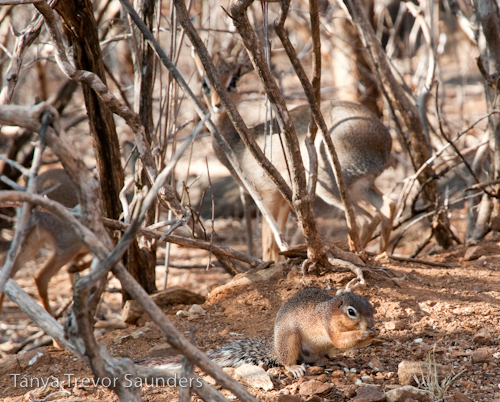
The Unstriped Ground Squirrel and the two Dik dik behind illustrate how well-camouflaged these bush creatures are, perfectly blending in with the colours of their surroundings.
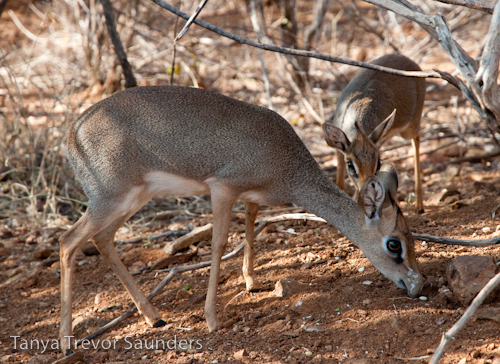
The mother Dik dik (baby behind) has got some strange white marks on her nose - it looks like a fungus of sorts. However, she looks in prime condition, so whatever it is does not seem to be bothering her.
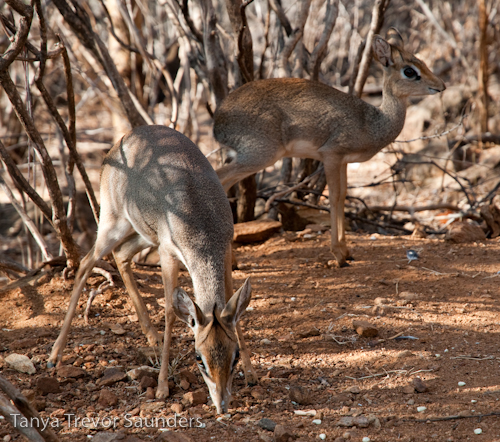
The baby Dik dik (behind) has a shorter, stubbier snout than the adults.
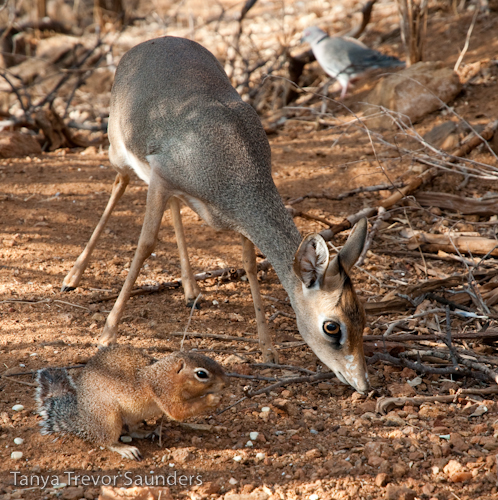
A Squirrel feeds on maize side by side with the mother Dik dik, with an African Mourning Dove in the background, picking up millet.
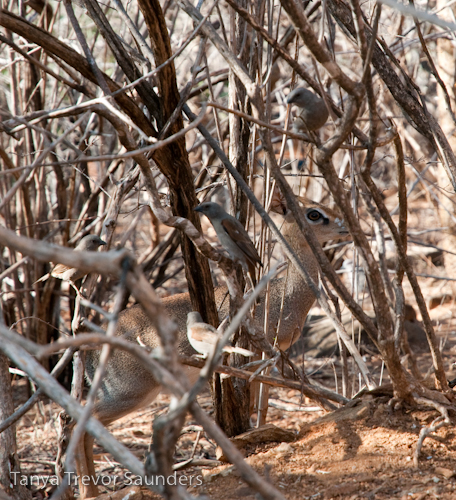
African Grey Sparrows dance around in the bushes around the Dik dik, plucking up courage to come down for a tasty meal of millet.
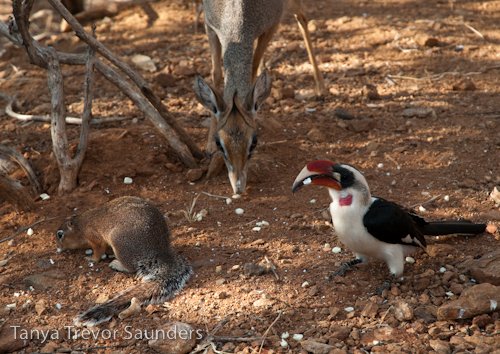
The male Von der Decken Hornbill does not bother either the Dik dik or the Squirrel. They are all too intent on filling their bellies as fast as they can!
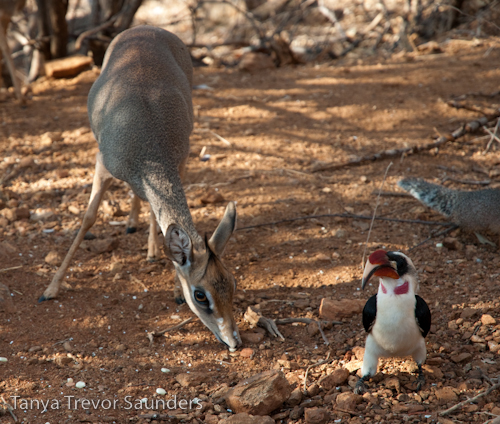
Maize-munchers...
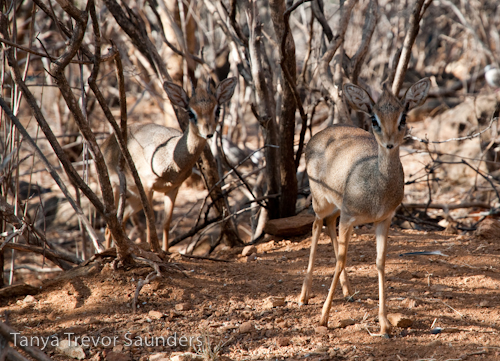
The Dik dik father behind his offspring. Dik dik males have tiny horns and are somewhat smaller than the females, so depending on whether this baby is male or female, it may grow up to be bigger than its father.
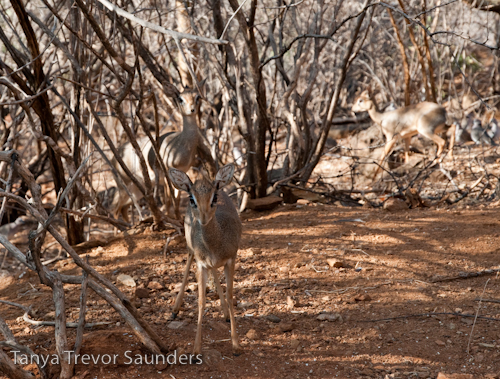
The whole family: Baby in front, mother directly behind it and father off to the right behind.
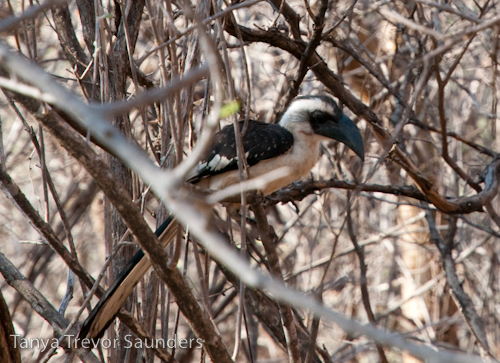
Speaking of families, this immature female Von der Decken Hornbill turned up behind the kitchen for the first time yesterday. It must have been out of the nest for quite a while already, but you can tell it is not yet fully grown by the shorter beak and the still-speckled wing coverts. Considering we are at the end of the dry season, it is a strange time for young birds to appear - normally they would hatch in the wet season when food is plentiful. Certainly, the adult Hornbills are courting, and look like they are getting ready to mate as we also wait expectantly for the imminent rains.
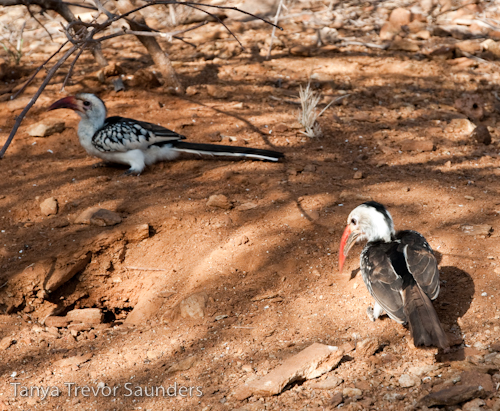
The Red-billed Hornbills also have a youngster in tow. Again, you can tell by the immature bird's much shorter beak (on the left).
Magic is also watching a herd of elephants, sporting an abundance of babies of all sizes, crossing an African river in the grey light just before dawn breaks fully:

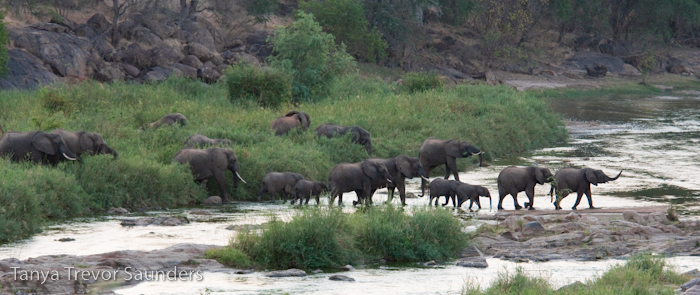
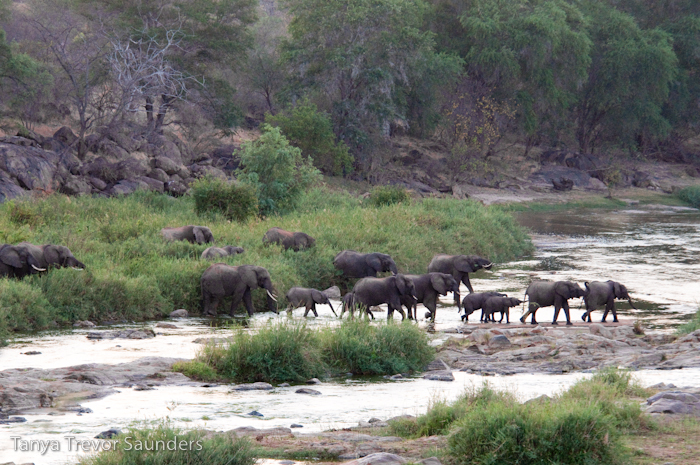
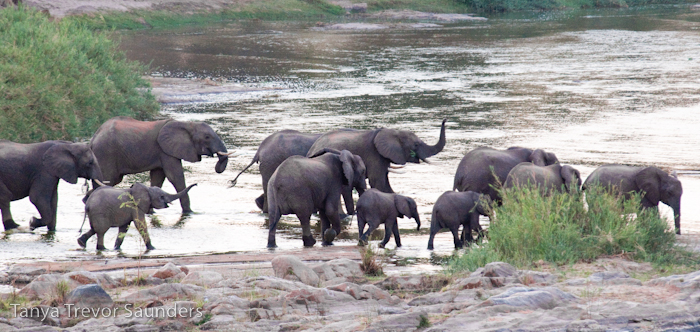
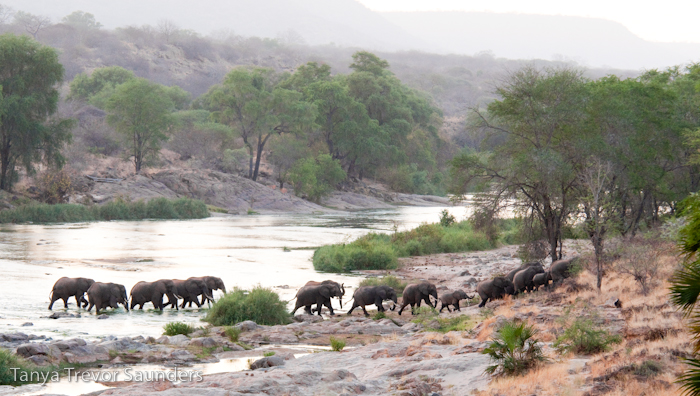
Kulafumbi is now on Facebook...join us over there for extra photos and news snippets...





Reader Comments (3)
Beautiful pictures, I really like!
Kulafumbi seems to be a great place to watch the wild creatures from closely...The squirrel,the dik dik, and the Von der Decken Hornbill are so beautiful....Frankly saying your post really increases their respect in my heart...I too a person who love to feel the life's of wild creatures and your post lighten up that feeling..Thanks for this...
Wow..!!!! Love to see the wild creatures early in the morning....You are so lucky that you have shoot out the morning life's of these beautiful animals and birds...Squirrel and the Dik are looking so innocent...i like their beautiful eyes...
location villa costa maresme